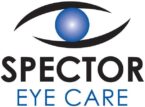There are many patients with Diabetes Mellitus who believe that the underlying disease is simply an inability to effectively metabolize and process glucose. Unfortunately, the reality is that the effects of diabetes are considerably more widespread and actually affect many organs and tissues throughout your body. Diabetes causes damage to the small blood vessels throughout the body. When diabetes damages these small blood vessels it can impair the normal circulation of blood in organs and tissues. It is quite common for patients with diabetes to experience difficulty with the circulation in their legs, kidneys, heart, brain and eyes–especially the very small blood vessels of the eye found in the Retina. When diabetes causes damage to the small blood vessels in the retina, it is called Diabetic Retinopathy.
Diabetic Retinopathy is the most frequent cause of new cases of blindness among adults aged 20-74 years old. However, with early diagnosis and treatment, progression of the disease and its associated vision loss can at a minimum be slowed, and in many cases vision loss from Diabetic Retinopathy can be prevented.
Stages Of Diabetic Retinopathy
Diabetic Retinopathy tends to appear and progress in Stages beginning with Mild Nonproliferative, progressing to Moderate Nonproliferative Retinopathy, further advancing to Severe Nonproliferative Retinopathy and without proper attention developing into the most severe stage, Proliferative Retinopathy.
Diabetic Macular Edema
Normally, the small blood vessels in the Retina do not leak. One of the early effects of diabetes is to cause the blood vessels in the Retina to begin to leak by weakening the inner lining of the blood vessels so that they become porous. Leakage from the retinal blood vessels causes the center of the Retina, the Macula, to actually swell, a condition called Diabetic Macular Edema. Diabetic Macular Edema can occur in any stage of Diabetic Retinopathy.
The Macula is responsible for central vision, and thus Diabetic Macular Edema can result in vision loss of varying severity. The most effective and accurate ways to observe and diagnose Diabetic Macular Edema are to perform a careful dilated examination with a Fluorescein Angiogram (FA) and with Ocular Coherence Tomography (OCT). Using the Fluorescein Angiogram, Dr. Guerriero will be able to precisely and directly observe the severity and location of “leaky” blood vessels. By using OCT, Dr. Guerriero can detect very slight thickness changes in the Macula that may indicate the presence of leakage. It is important that leaking blood vessels be found as early as possible so that they can be most effectively sealed with Retinal Laser Photocoagulation Treatment. In most cases, early laser treatment will reduce the swelling and prevent further vision loss, but will not restore vision that has already been compromised.
It is also possible to have Diabetic Macular Edema and not have vision loss. Any diagnosis of Diabetic Macular Edema is an indication that breakdown of the retinal blood vessels from diabetes is beginning and requires careful monitoring. In the discussions of your Fluorescein Angiography Study, Dr. Guerriero will also make specific recommendations about how often you will need to return for eye examinations and the need for additional photographs, Fluorescein Angiograms or OCT Studies. Please be sure to keep these appointments as they are critical in helping you maintain your eye health and vision.
Treatment Of Diabetic Retinopathy
It is critical for all patients with diabetes to have regular eye exams since with early and aggressive treatment of Diabetic Retinopathy it is often possible to maintain vision and prevent severe vision loss.
The National Institutes of Health and the National Eye Institute have funded a number of large scale, multi-center, controlled studies that have produced clinical care guidelines for diabetic retinopathy used by our Connecticut Retinal Specialist Paul Guerriero, M.D.
These include:
- Early Treatment Diabetic Retinopathy
- Diabetes Control and Complications Trial (DCCT)
- Diabetic Retinopathy Study (DRS)
- Diabetic Retinopathy Vitrectomy Study (DRVS)
Dr. Guerriero uses the results of these studies to guide patients in the treatment of Diabetic Retinopathy since with early treatment it is possible for patients with Diabetic Retinopathy to have only half the likelihood of losing vision as compared to those patients who fail to receive early treatment.
